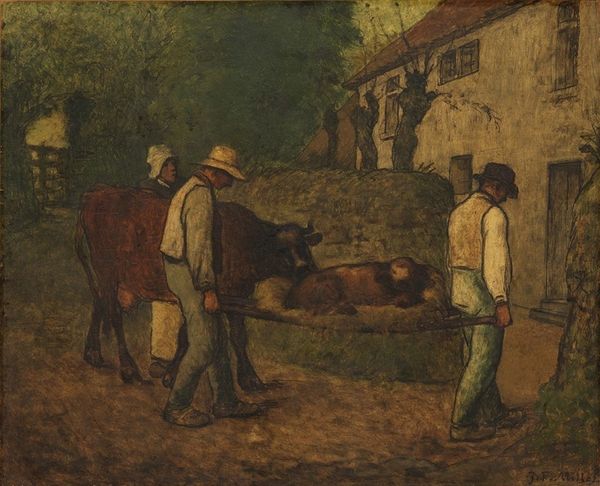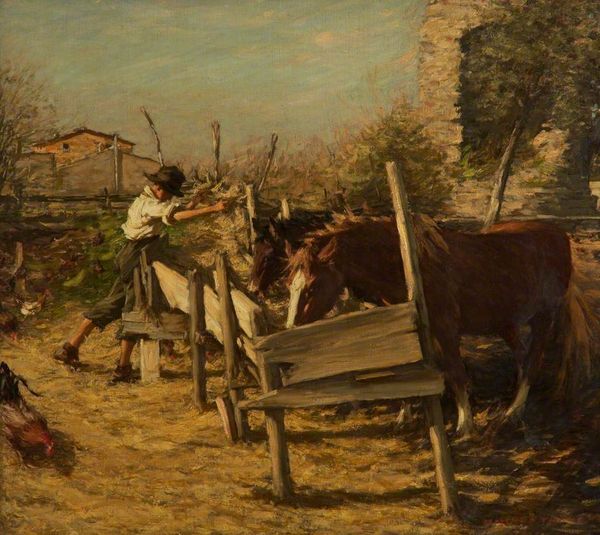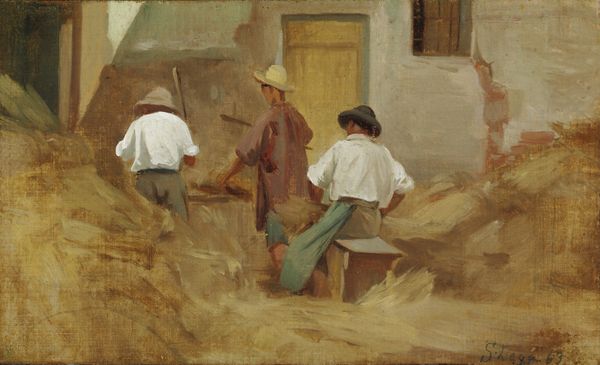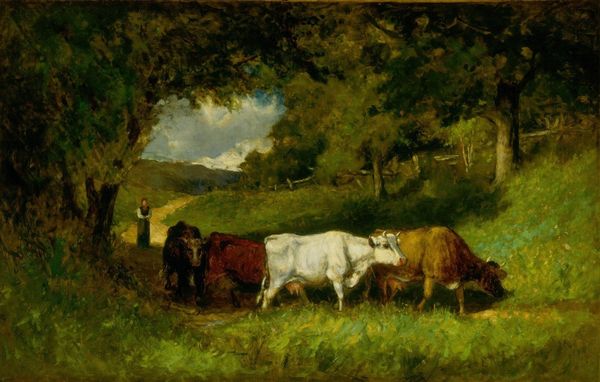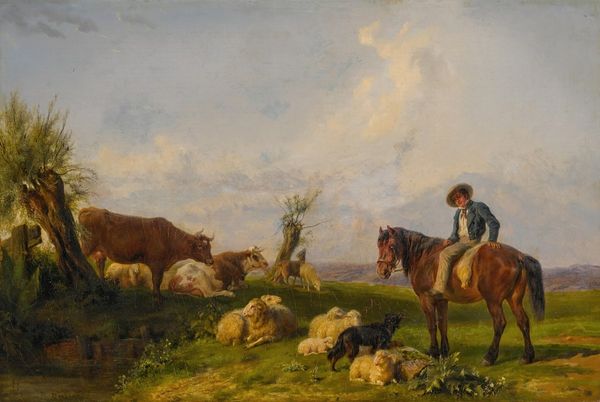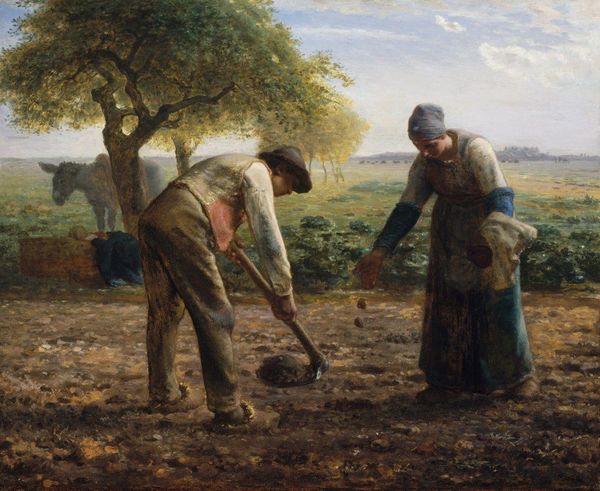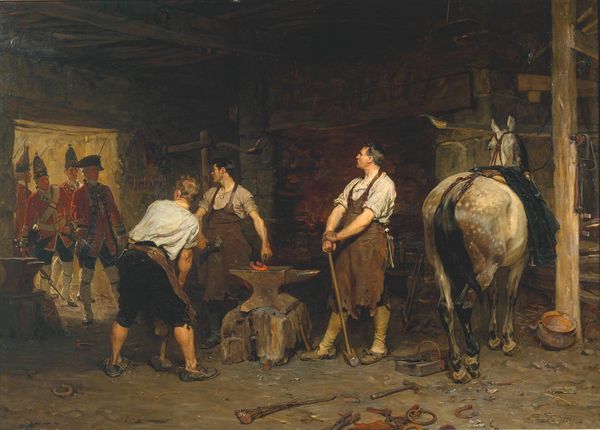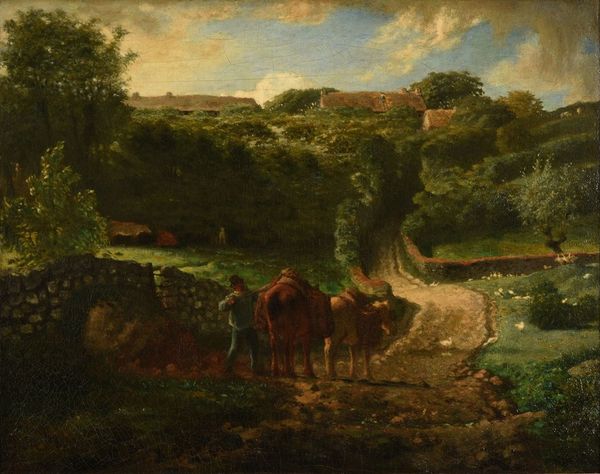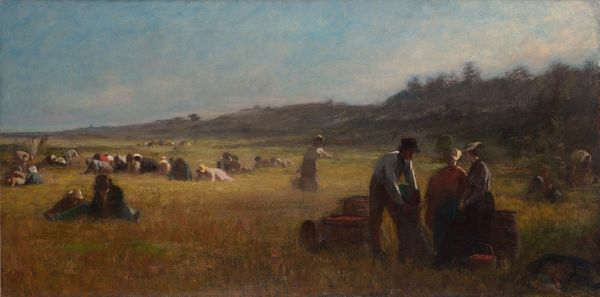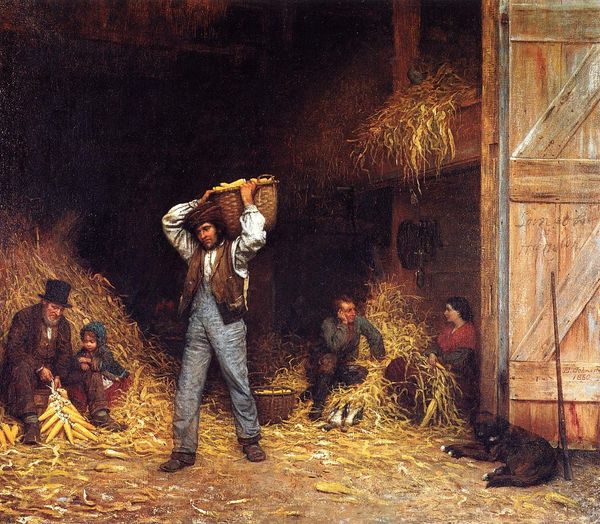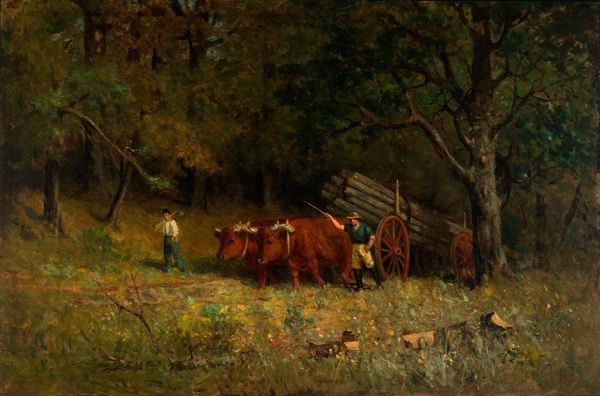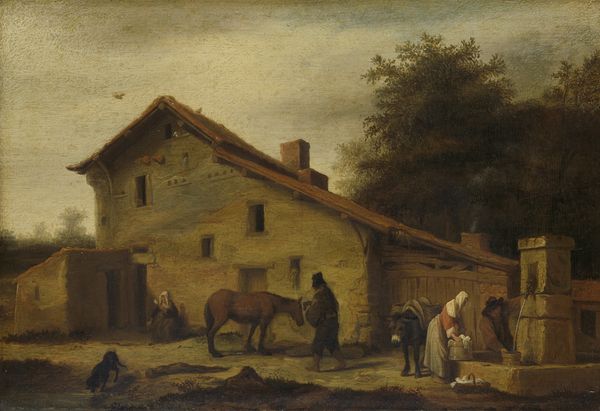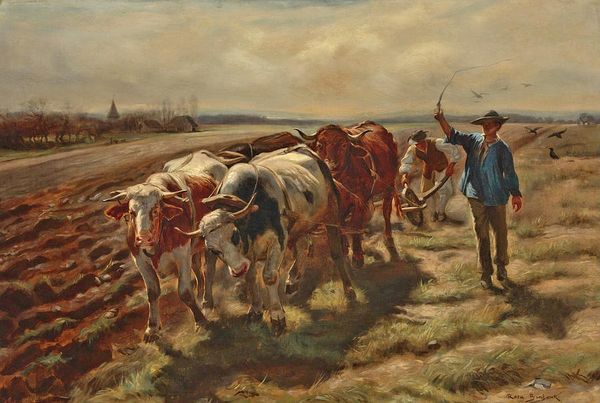
Copyright: Public Domain: Artvee
Editor: This is "Peasants Bringing Home a Calf Born in the Fields" by Jean-François Millet, painted in 1864, using oil paints. There's a definite air of tenderness in this depiction of rural life; what stands out to you? Curator: What strikes me is Millet’s romanticized yet grounded depiction of labor. How does this image challenge or reinforce existing power structures within 19th-century French society, particularly concerning rural workers and their relationship to the land? Think about who typically has been absent from, or negatively represented in, art of the time. Editor: So, you're suggesting that it's unusual to see peasants represented in such a gentle light? Often, wouldn't they be depicted in ways that reinforced class differences? Curator: Precisely! Millet positions these laborers, their family, and even the animals with a dignity that disrupts traditional hierarchies. Consider the burgeoning Realist movement and its socio-political implications. The choice to center the lives of the rural poor speaks volumes. How do you think the calf’s vulnerability intersects with the human subjects’ struggles? Editor: It highlights their interconnectedness, maybe? Their livelihoods depend on each other. There's a sense of shared fragility. It definitely encourages empathy. Curator: Exactly. Millet draws attention to a demographic frequently ignored by the wealthy and powerful. Can we even say this emphasis is a challenge to established societal structures? How does Millet depict labor, not just as toil, but also with moments of profound humanity? Editor: Seeing the painting in this light makes me question my initial read of "tenderness" a bit. Maybe there's something more radical going on. I see the empathy he felt toward ordinary people and how their struggle was not just part of rural life, but an undercurrent in art history as well. Curator: And by understanding the historical and societal context, we see beyond the surface, questioning whose stories are being told. It becomes about recognizing the value and complexity of lives often marginalized in broader cultural narratives.
Comments
No comments
Be the first to comment and join the conversation on the ultimate creative platform.
